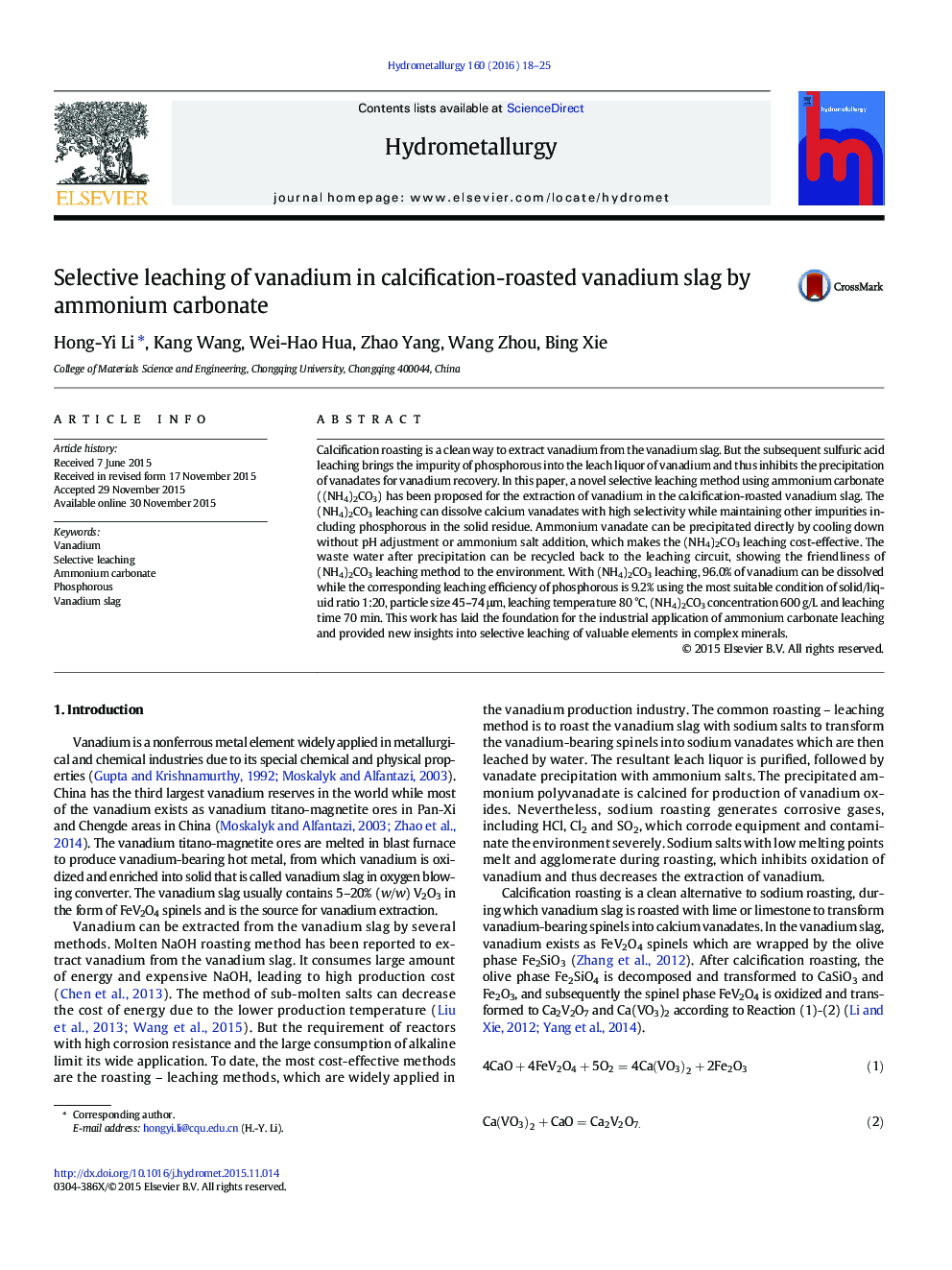| Article ID | Journal | Published Year | Pages | File Type |
|---|---|---|---|---|
| 211879 | Hydrometallurgy | 2016 | 8 Pages |
•(NH4)2CO3 leaching is proposed to selectively extract V from CaO roasted V slag.•96.0% of V can be leached by (NH4)2CO3, with only 9.2% of impurity P leached.•Waste water is recyclable to the leaching circuit, making the proposed process clean.
Calcification roasting is a clean way to extract vanadium from the vanadium slag. But the subsequent sulfuric acid leaching brings the impurity of phosphorous into the leach liquor of vanadium and thus inhibits the precipitation of vanadates for vanadium recovery. In this paper, a novel selective leaching method using ammonium carbonate ((NH4)2CO3) has been proposed for the extraction of vanadium in the calcification-roasted vanadium slag. The (NH4)2CO3 leaching can dissolve calcium vanadates with high selectivity while maintaining other impurities including phosphorous in the solid residue. Ammonium vanadate can be precipitated directly by cooling down without pH adjustment or ammonium salt addition, which makes the (NH4)2CO3 leaching cost-effective. The waste water after precipitation can be recycled back to the leaching circuit, showing the friendliness of (NH4)2CO3 leaching method to the environment. With (NH4)2CO3 leaching, 96.0% of vanadium can be dissolved while the corresponding leaching efficiency of phosphorous is 9.2% using the most suitable condition of solid/liquid ratio 1:20, particle size 45–74 μm, leaching temperature 80 °C, (NH4)2CO3 concentration 600 g/L and leaching time 70 min. This work has laid the foundation for the industrial application of ammonium carbonate leaching and provided new insights into selective leaching of valuable elements in complex minerals.
Graphical abstractFigure optionsDownload full-size imageDownload as PowerPoint slide
